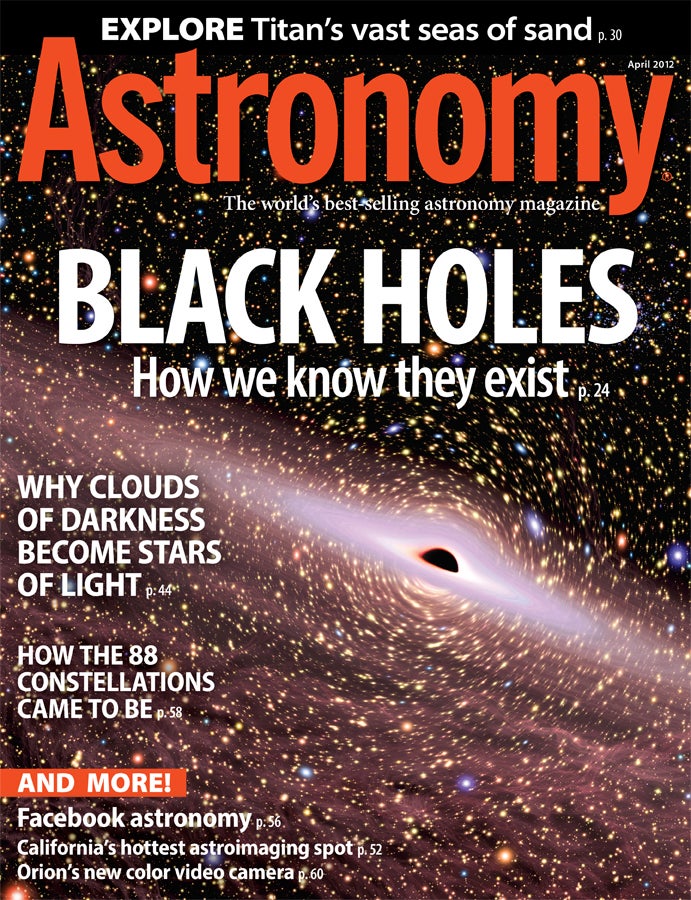
Waukesha, Wis. — Black holes are mysterious objects with so much mass that not even light can escape their gravitational grasps. In the past two decades, astronomers have gathered enough data to confirm that these cosmic oddities, however stealthy, do in fact exist. Two kinds of black holes litter the cosmos. Supermassive black holes contain millions to billions of times the mass of our Sun and seem to lie at the centers of most galaxies. Stellar-mass ones are the end stage of stars that start with at least 30 times the Sun’s mass and are scattered throughout a galaxy.Although they can’t directly see a black hole, scientists have other ways of teasing out its existence: from observing the material nearest to a galaxy’s center, spying X-ray blasts across the sky, and studying high-energy jets that emanate from galaxies’ centers. Associate Editor Liz Kruesi explains how astronomers have determined that these extremely dense objects exist and what the next step is to directly observe a black hole in “How we know black holes exist.”Read about these extreme cases of physics in the April 2012 issue of Astronomy magazine, on newsstands March 6.
“Probing Titan’s seas of sand”
NASA’s Cassini mission has shown that Titan, Saturn’s largest moon, is a strangely familiar place. It has a weather system, lakes, clouds, and desert sand dunes — like Earth. In “Probing Titan’s seas of sand,” planetary scientist Rosaly Lopes explores the patterns and structures that the Cassini team finds on the saturnian satellite.
“Use Facebook to get more out of your hobby”
Senior Editor Michael E. Bakich provides nine tips to help you take advantage of your Facebook profile to connect with others who enjoy astronomy. From the best way to update your “Status” box, to how to navigate the social networking site’s search engine, Bakich’s “Use Facebook to get more out of your hobby” will help you connect with astroimagers, astronomy clubs, and space missions to expand your involvement in astronomy.
“How the constellations came to be”
Eighty-eight official starry figures fill our sky today, but these patterns weren’t always the same. Explore the 6,000-year history of these stellar outlines in “How the constellations came to be” by Senior Editor Michael E. Bakich.
April night-sky events visible without optical aid
- April 3 — The Moon passes 9° south of Mars
- April 15 — Saturn is at opposition
- April 21/22 — The Lyrid meteor shower peaks during a moonless night sky
- April 24 — The Moon passes 6° south of Venus
- April 30 — Venus is at greatest brilliancy (magnitude –4.7)
Also in the April 2012 Astronomy
• “Turning clouds of darkness into stars of light” — Small, dark, and ubiquitous, Bok globules offer astronomers an inside look at how low-mass stars form.
• “The Modoc Plateau beckons amateur astronomers” — This California location has beautiful scenery, lots of amenities, and spectacular dark skies.
• “Astronomy tests Orion’s color video camera” — The StarShoot Deep Space Video Camera displays celestial objects in real time and captures video frames.
• “The Sky this Month” — Exclusive pullout star charts will guide you through the night sky.
• The April issue of Astronomy also includes Astro News, Bob Berman’s Strange Universe, Glenn Chaple’s Observing Basics, Stephen James O’Meara’s Secret Sky, Tony Hallas’ Imaging the Cosmos, Ask Astro, Letters, Web Talk, New Products, Deep-sky Showcase, Reader Gallery, and The Cosmic Grid.









